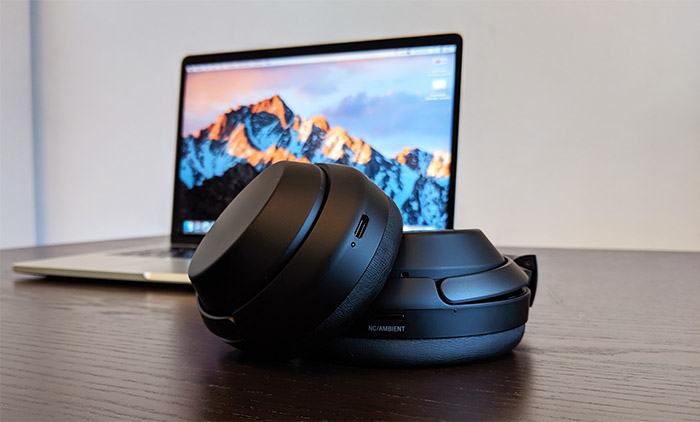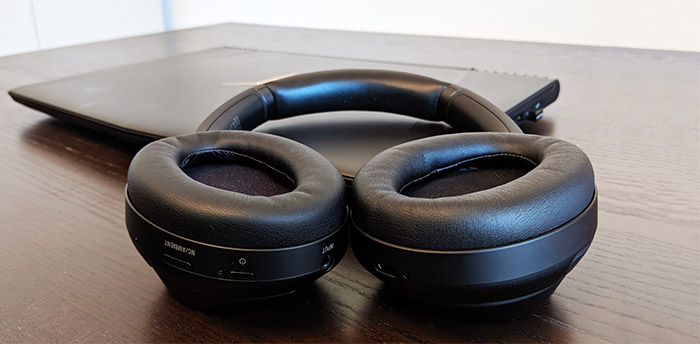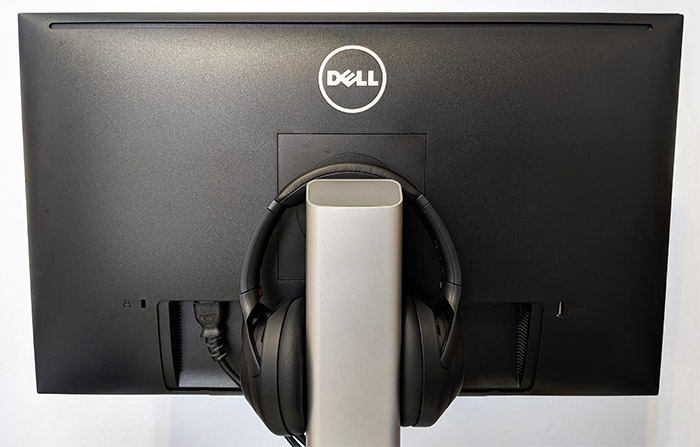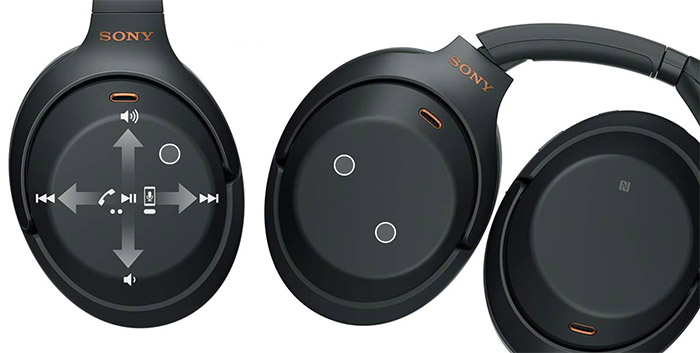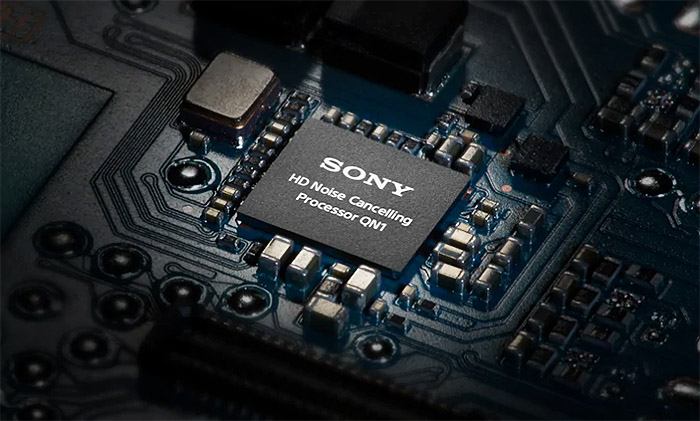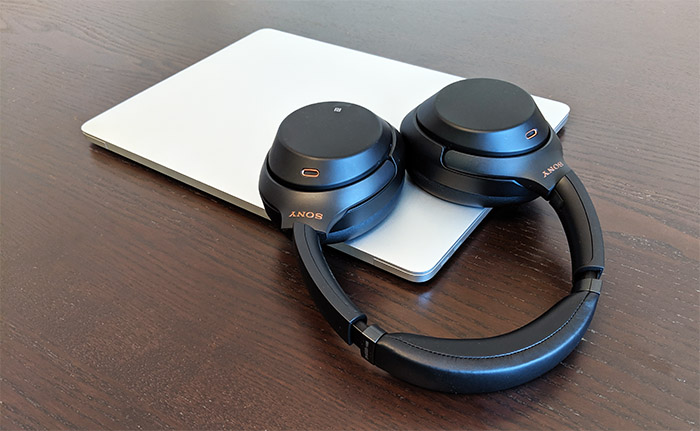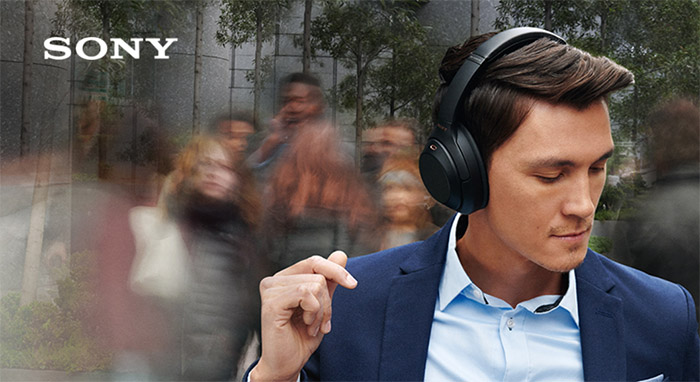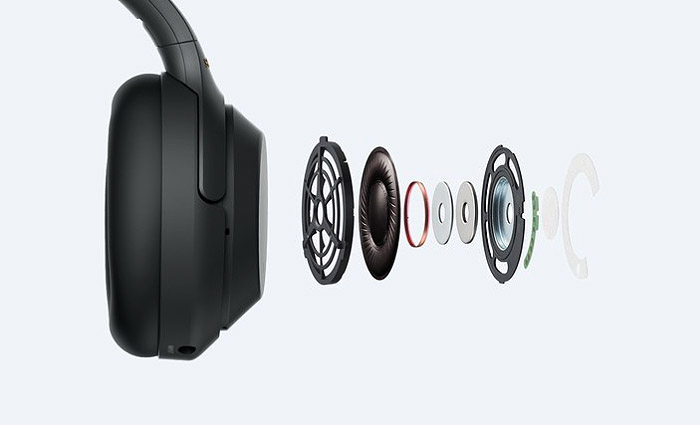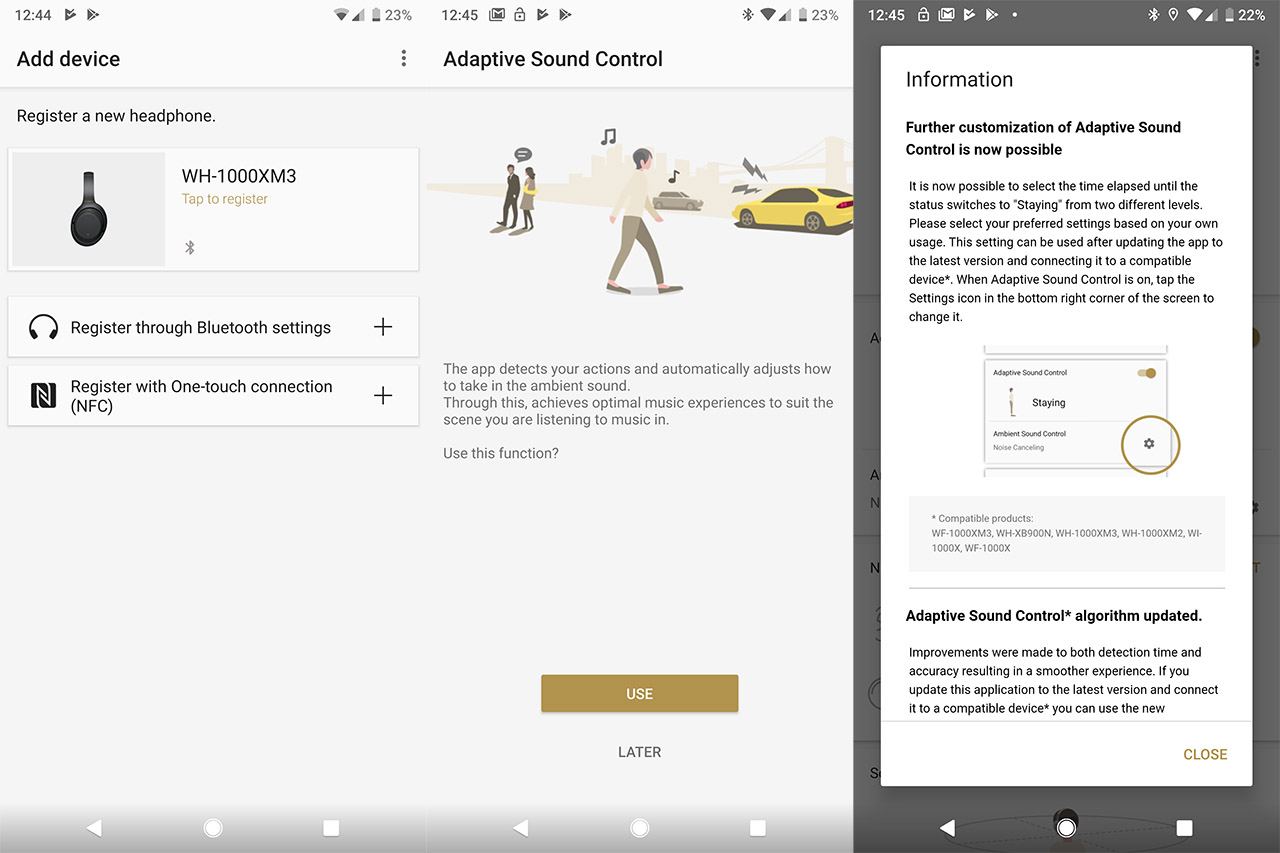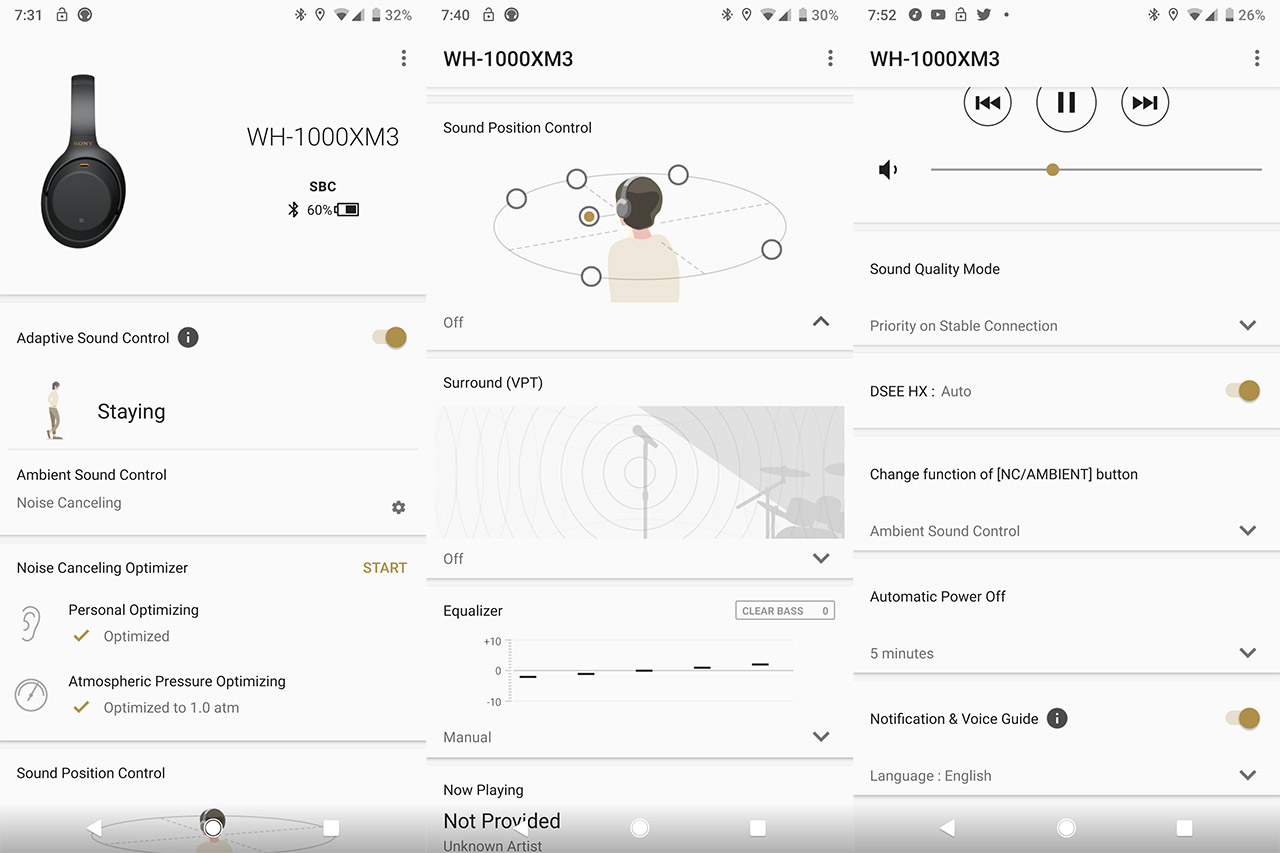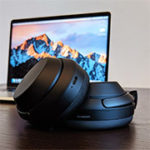The Sony WH-1000XM3 are the third generation of noise canceling headphones from the Japanese manufacturer and they’re the latest attempt towards creating the perfect user experience, providing a serious competition to the likes of Bose and Sennheiser. When compared to the previous generation, the new WH-1000XM3 offers superior noise canceling abilities (and perhaps the best on any headphones, for now), the cups feel more comfortable, despite getting slimmer, since they’re a bit deeper, better covering the ears (the padding is also improved) and the device now charges through a USB Type-C port.
| Sony WH-1000XM3 | |
|---|---|
| Amazon.com | Check Product |
Of course, Sony has also worked at improving the sound quality and, even if they’re still not audiophile level, they’re close enough. But, as the title suggests, there’s a less happy motive for me to check these pair of headphones than the simple joy of enjoying music with some high quality hardware, so can it truly cover the sound of noisy neighbors? Is the technology there yet? The overall attenuation seems to be at about -30dB (doing surprisingly well even with higher frequencies, where it can reach up to -40dB attenuation), so the Sony WH-1000XM3 do look promising on this chapter.
Note: Before spending a large sum of money on noise canceling headphones, you should always try to find better (and cheaper) ways to deal with the noise problems, such as talking to your neighbors and letting them know that you work from home (or that you need to sleep), talking to the landlord or even considering moving out. But, if you’re ‘stuck’ in a noisy apartment or office for any possible reason, then some professional grade ear plugs or some passive noise isolating headphones (if you can’t stand wearing the ear plugs for longer periods of time) could also do the trick. Otherwise, let’s embark in this noise-canceling journey with the Sony WH-1000XM3.
UPDATE 08.31.2021: After two years and almost daily use, I need to update the review to showcase how these earbuds have held up until now. And the good news is that the ANC technology works just as good as the day I got the headphones, but the bad news is that the build quality is so poor that you just can’t avoid breaking them.
UPDATE 12.07.2019: Two months have passed since I purchased the Sony WH-1000XM3 and I have been using them every day for about 8-9 hours (I am not exaggerating), so I can say without doubt that they have improved my well-being significantly. At last some peace and quiet. Click here to go directly to the section with the detailed impressions over how the headphones handled the noise from neighbors over the past two months.
Built Quality and Design
If you put the Sony WH-1000XM3 next to its predecessor, the WH-1000XM2, you will notice that they’re pretty much identical, but, on a closer inspection, there are some small, but relevant differences between the two models. The Sony WH-1000XM3 has kept the same stylish look, but the cups have gotten only a bit slimmer and the ear pads have been completely changed, going away from the synthetic leather padding (of the previous model) and adopting a more soft-to-touch material (the headphones come in black and silver, the latter being more prone to smudges). Furthermore, Sony has also improved the padding on the headband and there is now a copper finish around the top-facing microphones (which gather the ambient noise that needs to be negated).
The WH-1000XM3 are a bit on the bulkier side, so they weigh approximately 9 ounces, which is a step down from the 9.7 ounces of its predecessor and close to the 8.96 oz of the Bose 700. The plastic felt sturdy and robust and you can easily adjust the height and width of the headphones, but, since it has been reported that the previous generation was fragile and could break after constant use, it’s only fair to ask if the Sony WH-1000XM3 are plagued by the same issues. For now, a few days since I got them, everything is fine (as it should be), but some users have indeed reported that their units have broken and, of course, Sony claims that everything is now fixed, so we’ll see if that’s indeed the case.
For my specific use case (to cover the noise coming from other apartments – also available for people chatting near your office), the comfort is of paramount importance considering that I will be wearing them for at least 8 hours a day and I was not let down by Sony, since there was no pressure built on my ears, but there is a bit of pressure on the top of my head (especially if I kept the ear cups tighter), so I had to readjust the headphones after about about three hours or so (1-2 minutes pause). Most headphones that rely on passive noise isolation completely cover your ears to achieve that sealed effect and, while the result is great for reducing background noise, your ears will easily get hot. The WH-1000XM3 also seals your ears from background noise (in addition to the active noise cancellation) and, while my ears did indeed get only a bit warmer (it was like wearing a beanie), I felt no discomfort (the temperature in the room was about 80 degrees F, so this may change during the summer).
Of course, I would advise against working out with these headphones, since your ears won’t be able to breath and because of their size, they’ll be uncomfortable. On the bottom of the right ear cup, you will notice that Sony has added a USB Type-C port for charging the unit (a move that managed to push even Bose towards adopting the USB Type-C standard on their new 700 noise-canceling headphones) which will charge the unit from 0 to 100% in about 3 hours and you can also get about 5 hours of continuous play after only a 5 minutes charge (you can’t use these headphones while charging them). This means that you can get almost 30 hours with ANC at about 70dB, which is nothing short than fantastic (to preserve more battery life, you can select the amount of time after which the headphones will turn off in case they’re idle using the dedicated mobile application).
On the bottom of the left ear cup, there is a Power button, along with an LED (flashes blue two times when you turn the device on, flashes red for about 15 seconds when the battery is low and will remain solid red when charging the headphones) and an Ambient / NC switch (which toggles between the Noise Canceling mode and the Ambient Sound mode – it will also tell you if they’re on or off). The outside of each ear cup has a touch-sensitive panel which allows you to easily interact with the headphones: tap twice on any ear cup to pause/start a song, swipe up/down to turn up/down the volume and swipe left or right to go to the previous/next track.
Some users have signaled that the touch-sensitive panels are not always responsive during the cold, but, where I live right now, the temperature doesn’t go below 32 degrees F (not even during the winter), so I will be able to test this aspect towards the end of the year in another location (hopefully) where the temperature does go down to -13 degrees Fahrenheit. It seems that Sony has addressed this issue and said that the touch-sensitive panel is calibrated for a specific temperature, so to make this issue go away, you just need to turn on the headphones while you’re outside.
The WH-1000XM3 does come with a relatively large (but still portable) case made of a nice textile (with a mesh material on one side) and inside it, Sony has put special delimiters for the headphones and has added a USB Type-C cable (7.87 inches), the headphones cable (3.5mm to 3.5mm – it’s 3.9 feet long) and plug adapter suitable for in-flight use (a very welcomed addition).
UPDATE 08.31.2021: After two years of use, the leather material held up great, there are no cracks and the softness is still there (so yes, my ears still feel great), but the plastic outer shell slider does break even if you try your best to not constantly take the headphones off and then put them back on. OK, so they’re broken? What now? Well, you’re kind of screwed. One because you won’t find replacement parts from Sony (I didn’t in Europe) and secondly, because there is one manufacturer that provides easy-to-attach parts, but most other will give you the piece that you need to slide the cable through it. And that’s impossible unless you desolder the wires – don’t do that unless you know what you’re doing. So, your solution is to either hope that one manufacturer has the parts in stock (it mostly doesn’t and with the next gen already out, it may never do) or 3D-print your own parts, which is not a widely available solution. This means that Sony wants you to upgrade your headphones after a few months of use which is not very consumer-friendly and neither is environment-friendly either.
Features and Sound Quality
When the noise canceling technology first arrived on headphones, it was a phenomenal technological breakthrough and it applied pretty much the same principles that is used today by modern headphones. Specifically, we know that the sound waves (that travel through air) are longitudinal waves with compressions and rarefactions and, in order to cancel them, we need other sound waves which have an inverted phase, but keep the same amplitude as the original sound waves; these waves will cancel each other in a process called destructive interference (read more on Wikipedia).
The way the noise canceling headphones work is that they rely on some powerful microphones to capture the sound before reaching your ears and the noise canceling hardware immediately creates the ‘opposite sound’ which, along with the original sound wave is then fed towards the speakers. The problem is that this technology works very well with constant droning sounds (driving cars, the plane engine) and it struggles with high frequency sudden noises (people screaming, dogs barking).
Of course, this tech has been perfected over time and now the manufacturers have also made some decent steps forward when it comes to covering even the high pitched, irregular sounds. The Sony WH-1000XM3 uses an HD Noise Canceling Processor QN1 which is supposedly four times better than the chip used by the WH-1000XM2, promising a better noise canceling experience (and the WH-1000XM2 was already an excellent performer in this regard) and, thanks to the 32-bit DAC and amplifier on the chip, the headphones should also offer an improved sound quality. Since I often work from my home office, dealing with noise from neighbors has been a challenge which I didn’t anticipate and I know that a lot of people recommend using earbuds to block noise, but I found that they irritate my ear canal, so I can’t handle them for more than 10 minutes. So far, in terms of comfort and passive noise canceling, the Sony WH-1000XM3 have done a great job, but the Active Noise Cancellation does have some serious challenges to overcome.
What I’m dealing right now is with constant shouting (the neighbors’ ears aren’t in top-shape conditions while mine are fantastic – is it a curse or a blessing?), a dog barking (poor guy almost always sits indoors), slammed doors (the vibrations could be a challenge) and high pitched sounds coming from moving chairs (similarly to nails on the chalkboard, so I suspect these will be the hardest to cover). One of the first things that I noticed is that I couldn’t hear my breathing while wearing these headphones, something that I absolutely dreaded when wearing noise isolating earbuds and I also noticed that it does a fantastic job with droning sounds which were completely removed from the background: I had no idea that there were people using grass cutting machines just outside my house until I took the headphones off.
As for the problematic neighbors, this is what I experienced so far (during four days of testing): with a bit of a white noise in the background, the dog barking a few feet from my office became like the ticking of a watch, otherwise, I could definitely tell that it’s a dog barking, but the noise was significantly weaker and less distracting; furthermore, ANC + low volume white noise couldn’t completely cancel the door slammed directly underneath my office which sent vibrations towards the entire building (it’s somewhere in the 70-80dB levels), but, while it was relatively loud, I did feel it less (at about 45-50 dB) and, again, it was a lot less distracting – what’s great is that I couldn’t hear at all the other slammed doors. These people also walk barefoot, so there’s constant thump thump noise which again, the headphones covered completely and as, for the shouting, low level white noise + ANC did the trick. So far, even after only a few days, my quality of life has significantly improved since I am no longer stressed, I am a lot more relaxed and overall, I have a better mood than before.
UPDATE 12.07.2019: Two months have passed, so it’s a nice milestone to discuss the way the Sony WH-1000XM3 handled the uneducated neighbors in a building apparently lacking any sound proofing. I don’t know what kind of magic was involved when designing these headphones, but the noise cancelling has been fantastic and completely reliable with pretty much all types of noise. That being said, the dog barking has remained a non-issue since while I could distinguish it, it just wasn’t enough to distract me from my work (imagine hearing some barking from hundreds of feet away). Next, the door slamming.. This has been very tricky since it’s a sudden, powerful, high-pitched noise and it comes from two locations: first, there’s the door underneath my office which is capable of giving someone a heart attack (the sound can go over 80dB as measured by a sound meter) and it has remained audible somewhere in the 50dB, so it can still startle me, but not like before (if I put some low-level white noise, it gets almost completely drowned).
The positive side is that it happens about once a day, while the kitchen door can be the most problematic since it’s being hit about 30-40 times a day with full force (how it still stands is beyond science). If I used only ANC, then the headphones could almost completely hide the door sound, but the vibrations would still travel through the entire apartment (like a small earthquake), so you will ‘feel’ that something is going on, but it won’t disrupt your workflow in any way. Lastly, there’s the people that scream their lungs out underneath the office. Similarly to the kitchen door, you may or may not realize that something is going on (something like: Did I just hear something?) and that’s about it, since the Sony headphones could easily cover the loud screams. Of course, it’s definitely doable to completely cancel out the sounds, but it does require at least a little bit of white noise to be played in the headphones.
As for the sound quality, well, the music simply sounds better than anything else I have in my house, so it’s been great.
A noisy environment will raise your blood pressure (which is extremely dangerous on the long term if left unattended) and will affect your sleep quality – it would have been great to be able to wear these headphones while sleeping since it could cover the TV noises from the neighbors (but that’s only slightly possible with earbuds, for now). As expected, there can be some possible negatives while using noise canceling headphones (besides the price tag). Some people have reported that the ANC tech has made them feel nauseous and the possible reason for that can be a more sensitive inner ear, so it may be wise to first test them out for a bit before purchasing them or getting the headphones from a shop with a more flexible return policy (some users said that the nausea went away after a certain period of time and) – it’s worth noting that I haven’t experienced any nausea or motion sickness while wearing the Sony WH-1000XM3. Furthermore, some noise canceling headphones do have a constant hissing sound but this is usually the case for cheaper models (the WH-1000XM3 weren’t plagued by such issues) and, if the unit can be connected via Bluetooth, then the battery life could be a huge impediment – thankfully, this is again not the case, since you can get almost 30 hours with ANC enabled.
Another advantage for using noise canceling headphones is that you can listen to music at a lower volume even if you are in a crowded, noisy environment, which means that you won’t damage your hearing over time (as you would if you had to cover up all that background noise by listening to music at a dangerous volume levels). If you still payed that much for a pair of headphones, even if the purpose for owning them may be for different reasons than pure ‘audiophile’ listening, you may start caring about the sound quality. So how is it? Overall, the sound quality is good, but it’s not audiophile level good, as there is a lot of midbass which means that some songs can sound a bit muddy. This can be fixed to a certain extend using the equalizer from the mobile app (drop the mid bass frequency and raise the upper range to get a clearer sound and better vocals), but you do need to know that the settings will remain available only when pairing to that specific device and will revert if you pair your headphones to another phone or laptop.
What I did like a lot is the fact that raising up the volume doesn’t distort the sound and instead, it feels that there is more intensity to the music and I could differentiate each instrument. If you work in an office and want to shield yourself from your noisy coworkers, but still need to take calls, then the microphone is a very important aspect to take into consideration before purchasing a pair of ANC headphones. While using the Sony WH-1000XM3, the call quality is good (but not perfect) considering that the ANC does its job perfectly to cancel any background noise, so you can hear the other person perfectly fine – I had no idea someone was talking with me from about 7 feet and it was a bit strange to not hear your voice closer. The other person also said that my voice was clear like I would directly be talking to the microphone from the phone (I used a Google Pixel 2 XL for this test) and that the headphones would also capture the voices of other people in the vicinity (for example, the person that I called was able to hear the other person that was talking to me from about 7 feet, while I could not).
Connection and App
The Bluetooth connection is very good, even if the headphones use the version 4.2 and I got a perfect connection in my house from up to 30 feet from the phone (with two walls in between) – at this point, the signal became weaker and the music would interrupt. Some of the codecs that are supported by the WH-1000XM3 via the Bluetooth connection are the standard SBC (Subband Codec), the AAC (Advanced Audio Codec) which will work great with Apple products, the aptX codec which will work with some Android devices to provide a better sound quality than SBC, the aptX HD codec (better than the aptX) and the in-house developed LDAC which allows the transmission of Hi-Res audio content through the Bluetooth connection. One of the main criticisms addressed towards the WH-1000XM3 is that Sony didn’t implement the Bluetooth multipoint pairing, so there’s no seamless transition between your devices and this can be a deal-breaker for some users, but the headphones do have NFC, so a light bump on a supported device should make the pairing process a lot quicker.
The Sony WH-1000XM3 can be configured using a mobile app called Sony | Headphones Connect and it’s available for both Android and iOS. After downloading the app, you will get two options to register the headphones: either trough Bluetooth settings or using NFC. I chose through Bluetooth, so I had to press the Power button until it started flashing blue (it took about 7 seconds) and after it was detected by the mobile phone, it will immediately say that it was Registered, so now you can start the setup process: you will be asked if you wish to use the Adaptive Sound Control (it dynamically adjusts the way the headphones will handle the outside noise) and, after the app will let you know that you can further customize the Adaptive Sound Control feature, it will immediately ask if you want to Set up your Google Assistant. In case you’re an iPhone user, the headphones also support Siri and there is also support for the integration with Amazon Alexa.
After the initial setup process is done, you will be greeted by the app Dashboard, where you can see the remaining battery life, that the Adaptive Sound Control has detected your current actions (in my case, I was sitting at my desk) and if you want to modify it, press on the small cogwheel to the right. Doing so, will allow you to adjust the Ambient Sound (from 0 to 20), the time until the setting switches to Stopped (long or short), but this only available for the Staying action and there are three other actions: Walking (where you can adjust the Noise Canceling level), Running or Transport. Back on the Dashboard, you can run the Noise Canceling Optimizer which will adjust the Noise Canceling to be better suited for your ear and will also detect and optimize the Atmospheric Pressure (this is a great feature for people that fly often and have problems with the pressure in the cabin). Further down, there’s the Sound Position Control which allows you to adjust how the sounds appear to reach your ears (simulates various positions) followed by the Surround (VPT) feature which simulates various scenes, such as an Arena, Concert Hall or a Club.
Further down, there’s the Equalizer where you can manually change the way the headphones sound or you can choose a profile, followed by the current playing track, the Sound Quality Mode (the priority can be set on the connection or on the sound quality), the DSEE HX (upscales your current sound source to near high-res sound quality), the option to Change the function of the NC/Ambient button (can select Google Assistant or Amazon Alexa), the time after the headphones will turn off if they’re inactive and the language for Notifications and the Voice Guide.
Conclusion
Without a doubt, the Sony are a fantastic pair of headphones, offering a good sound experience, excellent noise canceling (including the Adaptive Sound Control), the call quality is above average and the build quality is decent is really lacking, since some piece of plastic will break after a few months. besides that, there are some other shortcomings, such as the multipoint pairing (the lack of) and occasional touch controller hiccups, but overall, these are some of the best ANC headphones available, so Bose, the usual go-to for this type of devices is now facing some serious competition from Sony. That being said, so far, after about four days of constant use, I can say that the WH-1000XM3 has managed to cover most sounds from my neighbors and those that it couldn’t completely (sudden peaks can’t be fully canceled, for now), it significantly lowered the perceived dB, therefore making the external noise a lot less distracting and greatly improving both my mood and the amount of work that gets done. I will continue to wear them for a long time and will constantly upgrade this article when I reach certain milestones.
Check the product here:
Sony WH-1000XM3
Pros
- Excellent Active Noise Canceling
- The sound quality is very good (including during a call)
- Very comfortable
- Fantastic battery life
- Solid Bluetooth connection and it supports lots of codecs
Cons
- No multipoint connection
- The touchscreen controller sometimes acts up in cold weather
- The plastic build is very bad quality and will break after a few months of use

Mark is a graduate in Computer Science, having gathered valuable experience over the years working in IT as a programmer. Mark is also the main tech writer for MBReviews.com, covering not only his passion, the networking devices, but also other cool electronic gadgets that you may find useful for your every day life.

